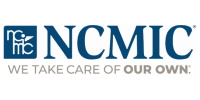Palmer College of Chiropractic will host Homecoming 2007 on its Davenport, Iowa, campus Aug. 9-11. The program features a variety of continuing education sessions as well as the traditional and some new social events, along with a vendor expo filled with the latest chiropractic products and services. This year’s theme is “Look Inside,” and refers to some exciting additions to Palmer’s Davenport Campus, as well as the healing, compassion and knowledge that chiropractors can find within themselves and at Palmer. There will be a dedication ceremony on Aug. 10 for the new Palmer College of Chiropractic Academic Health Center, a 50,000-square foot, state-of-the-art clinic and clinical learning resource center. The Palmer Homecoming 2007 schedule features some new events, including special day tours for spouses and guests at area attractions such as the Quad-City Botanical Center, the new Figge Museum in Davenport and the Lavender Crest Winery. There also will be several options to choose from during “Palmer Night” on Aug. 10: music at the River Music Experience, a movie at the IMAX Theatre or a dinner cruise on the Mississippi River. Continuing education sessions will be presented by top-notch speakers in the chiropractic community, including Drs. Casey Crisp, Daniel Drubin, Will Evans, Joan Fallon, Cheryl Hawk, Keith Kramer, Tracey Littrell, Dennis Marchiori, Ian McLean, Bill Moreau, Dan Murphy, Robert Rakowski, Jeremy Rodgers, Frank Sovinsky and Dan Weinert; along with Ms. Christine Crisp, Mr. Bill Esteb, Frank Mitvalsky, J.D., Ms. Judith Siebert and John Slover, J.D. The closing session features a motivational presentation by “The Chalk Man,” Sam Glenn. Chiropractors may earn up to 16 hours of continuing education credit pending state board approval. Chiropractic Technologists may acquire up to seven hours of radiology credit. Topics to be covered include: patient-centered spine care; profitability; radiology (for D.C.s and C.T.s); the science of chiropractic subluxation and neurology; dilemmas and dialogues; nutritional strategies; chiropractic and autism, ADD and ADHD; the science of wellness; the biggest subluxation in chiropractic; the doctor-patient relationship; extremities evaluation and management; real world solutions for the chiropractor’s dilemma; and basic and advanced estate planning strategies. The full schedule and registration information for Palmer Homecoming 2007 are available online at:
Source- Home
- About
- Find a Doctor
- Membership
- Education
- News
- Newsletter
- Conventions & Symposiums
- Webinars
- Positive Press (F4CP) ↪
- Insurance and Medicare ⚿
- New Practitioners ⚿
- Center for Excellence ⚿
- Informative Links
- Mandated Reporter Training↪
- Leadership
- Officers and Regional Directors
- Districts
- District Officers ⚿
- District Map
- District 1 (Manhattan)
- District 2 (Brooklyn)
- District 3 (Queens)
- District 4 (Bronx)
- District 5 (Staten Island)
- District 6 (Nassau)
- District 7 (Suffolk)
- District 8 (Westchester)
- District 9 (Mid-Hudson)
- District 10 (Capital Region)
- District 11 (Mohawk Valley)
- District 12 (Central NY)
- District 13 (Binghamton Area)
- District 14 (Rockland County)
- District 15 (Finger Lakes)
- District 16 (Southern Tier)
- District 17 (Western NY)
- Committees
- Bylaws ⚿
- Code of Ethics ⚿
- Elections ⚿
- Advocacy
- Sponsors
- Classifieds




